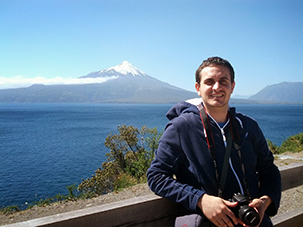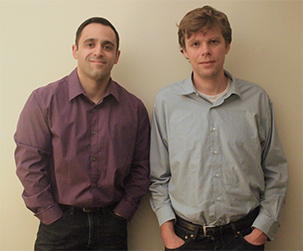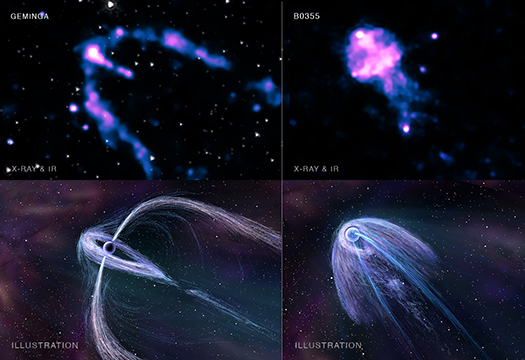The Poetry of a Clandestine Black Hole
Over several years we have hosted the results of poetry competitions organised and judged by Jonathan Taylor, a Senior Lecturer in Creative Writing at The University of Leicester in the UK. Here, Jonathan gives some details about the latest competition and discusses the link between poetry and science.
Carnival of Space
It’s Carnival time, folks, so let’s get started! Here is a brief look at interesting space stories from the past week.
At Universe Today, their writers have got the Universe covered. In one post, they take a look at an intriguing new result that may help tie "Joshua's Eclipse" to the Battle of Gibeon, showing how astronomy can help make connections in other fields such as history. https://www.universetoday.com/133166/ancient-annular-dating-joshuas-eclipse/

Processed image taken on Dec. 11, 2016, at 9:27 a.m. PST (12:27 p.m. EST) by the NASA Juno spacecraft, as it performed its third close flyby of Jupiter. Credits: NASA/JPL-Caltech/SwRI/MSSS/Eric Jorgensen
In another post, they explain the most recent exciting pass of the Juno spacecraft over the cloud tops of Jupiter. NASA is also offering the public the chance to vote on what features Juno should image next. Take a look! https://www.universetoday.com/133215/juno-buzzes-jupiter-cloud-tops/
Stellar Gluttony: Force-feeding a Massive Black Hole for over a Decade

Dr. Dacheng Lin
We are pleased to welcome Dr. Dacheng Lin as our guest blogger. Dacheng is the first author of a new Nature Astronomy paper that is the subject of our latest press release. This paper describes the discovery of a super-long tidal disruption event. Dacheng is a research scientist at the University of New Hampshire. After obtaining his PhD from Massachusetts Institute of Technology, he was a postdoc at IRAP, France and then at the University of Alabama. His main research interests include X-ray binaries, intermediate-mass black holes, and tidal disruption events.
Life is full of surprises and serendipity. My first time hearing about tidal disruption events (TDEs), where tidal forces from black holes rip stars apart, was in a colloquium at MIT when I just became a graduate student. At that time, as a new astronomer, I was hesitant to accept this "crazy" concept.
My involvement with TDE research began when I was a postdoc at IRAP, France. At that time, I took a long, systematic look at thousands of sources detected by a European Space Agency X-ray observatory called XMM-Newton. From that project I learned that most X-ray sources are active galactic nuclei (AGNs), which are supermassive black holes (SMBHs) at the center of galaxies that pull in – that is accrete – surrounding gas and emit copious amounts of radiation, including X-rays. Radiation from AGNs do not vary a lot because the gas surrounding them extends over a large scale and can last for tens of thousands of years.
Chandra Images Show That Geometry Solves a Pulsar Puzzle
NASA'S Chandra X-ray Observatory has taken deep exposures of two nearby energetic pulsars flying through the Milky Way galaxy. The shape of their X-ray emission suggests there is a geometrical explanation for puzzling differences in behavior shown by some pulsars.
Pulsars - rapidly rotating, highly magnetized, neutron stars born in supernova explosions triggered by the collapse of massive stars- were discovered 50 years ago via their pulsed, highly regular, radio emission. Pulsars produce a lighthouse-like beam of radiation that astronomers detect as pulses as the pulsar's rotation sweeps the beam across the sky.
X-rays From the Young Monsters: Studying Supermassive Black Holes in the Early Universe

Fabio Vito
We are pleased to welcome Fabio Vito as our guest blogger. Fabio and his colleagues led some of the latest work involving the Chandra Deep Field-South that were presented at the 229th meeting of the American Astronomical Society in January 2017. He obtained a Ph.D. degree in Astrophysics and Cosmology from the University of Bologna (Italy) in 2014. During his studies he collaborated with researchers from the Astronomical Observatory of Bologna and also spent a 6-months period at the University of Cambridge (UK). After one year in a postdoctoral position in Bologna, he moved to his current position as a postdoctoral researcher at the Pennsylvania State University. Fabio's work is mainly focused on the growth and evolution of supermassive black holes in the early Universe, exploiting some of the deepest X-ray data available.
Black holes are among the most fascinating objects in the Universe. Probably most people have at least heard about them, maybe reading about some pseudo-scientific speculations like wormholes, time travelling, etc. Or perhaps they have watched movies such as the famous 2014 movie "Interstellar", or even by listening to music, such as the "Supermassive Black Hole" song by the British band Muse.
However, despite their popularity, our knowledge of these monsters of the Universe is limited. We know that "normal" black holes (although nothing is normal about black holes), which have masses of a few to tens of times the Sun's mass, are formed when big stars die and explode as supernovas. However, there is more than just one type of black hole. At the centers of most galaxies, there is a "monster among the monsters." This is what astronomers call a supermassive black hole (SMBH), and they can weigh from millions to billions of solar masses. Despite the fact that almost all of the normal-sized galaxies in the Universe host a SMBH in their centers (even our Milky Way!), astronomers do not know when and how they formed.
The Discovery of Particle Re-acceleration in a Galaxy Cluster Collision

Felipe Andrade-Santos and Reinout van Weeren
For this guest blog post, we are lucky to have not one, but two, contributors. Reinout van Weeren obtained his PhD from Leiden University, The Netherlands, before moving to the Harvard-Smithsonian Center of Astrophysics as an Einstein Postdoctoral Research Fellow. He is currently a Clay Fellow at the same place. He works on merging galaxy clusters, focusing on combined radio and X-ray observations. Felipe Andrade-Santos obtained his PhD from the Universidade de São Paulo, Brazil, before becoming a postdoctoral research fellow at the Harvard-Smithsonian Center of Astrophysics. He works on X-ray observations of galaxy clusters and galaxy cluster samples. Reinout and Felipe recently presented their study on the merging galaxy cluster system Abell 3411 and 3412 at the 229th meeting of the American Astronomical Society meeting in January 2017.
Galaxy clusters are the most massive objects in the Universe bound together by gravity and contain up to a few thousand galaxies. They are also permeated by very thin 100-million-degree gas that is held together by the cluster's strong gravitational pull. This hot gas can be imaged with X-ray satellites such as NASA's Chandra X-ray Observatory. Galaxy clusters form by mergers of smaller clusters and galaxy groups. During a merger event, which typically lasts for about a billion years, the galaxies mostly fly past each other without strongly interacting. In contrast, the diffuse gas in the merging clusters collides, creating giant shock waves, which are cosmic versions of sonic booms generated by supersonic aircraft. Cluster mergers have been of great interest to astronomers and us because of the extreme physical processes that take place during such events.
Radio telescopes have shown that large regions of merging galaxy clusters glow at radio wavelengths. The radio emission is produced by tiny particles, called electrons, which spiral around magnetic field lines and have energies that are a million times higher than the particles making up the hot cluster gas. Astronomers have long been puzzled by how these energetic electrons are produced. One idea is that the energetic particles are accelerated to these extreme energies by shocks created when clusters collide and merge.
NGC 6357: Cosmic 'Winter' Wonderland
Although there are no seasons in space, this cosmic vista invokes thoughts of a frosty winter landscape. It is, in fact, a region called NGC 6357 where radiation from hot, young stars is energizing the cooler gas in the cloud that surrounds them.
This composite image contains X-ray data from NASA's Chandra X-ray Observatory and the ROSAT telescope (purple), infrared data from NASA's Spitzer Space Telescope (orange), and optical data from the SuperCosmos Sky Survey (blue) made by the United Kingdom Infrared Telescope.
Chandra’s Arcand Wins Smithsonian Education Award
Many people associate the Smithsonian Institution with a handful of museums on the National Mall in Washington, D.C., when, in fact, the Smithsonian consists of 19 museums, 9 research centers, a zoo, and affiliates around the world.
One fact that may not be known to some is that NASA’s Chandra X-ray Observatory is inextricably linked with the Smithsonian. The Smithsonian Astrophysical Observatory (SAO) in Cambridge, Mass., was at the center of the conception and development of the telescope and today it controls Chandra’s science and flight operations. In other words, Chandra is both a NASA and a Smithsonian mission.
One of the core tenants of the Smithsonian’s mission is the “increase and diffusion of knowledge.” This means that education and outreach can often take center stage at the Smithsonian. To highlight the important role education plays, the Smithsonian gives out one award every year to an employee that recognizes “creativity, excellence, and commitment to serving the nation through educational programming, exhibits, publications, and digital media.”
We are thrilled to announce that this year’s winner for the 2016 Smithsonian Education Achievement Award is Chandra’s visualization lead, Kimberly Arcand. Arcand was presented with the award on December 8, 2016 at the Smithsonian Castle in Washington, D.C. Among the Chandra-led projects being recognized were the NASA-funded public science programs "From Earth to the Universe" "Here, There & Everywhere," and “Light: Beyond the Bulb,” as well as Chandra community programs for girls and boys to improve coding skills with NASA data, and cutting-edge Chandra data visualization projects such as data-based 3D printed supernova remnants.
Super Starburst Galaxy Found One Billion Years After the Big Bang

Jingzhe Ma
We are pleased to welcome Jingzhe Ma as a guest blogger. She is the first author of a paper that is the subject of our latest press release. Jingzhe is a PhD candidate at the University of Florida, working with Prof. Anthony Gonzalez and Prof. Jian Ge. She is going to defend her PhD dissertation next summer. She has been working on the formation and evolution of high-redshift dusty galaxies through multi-wavelength observations. She joined the South Pole Telescope Sub-Millimeter Galaxy (SPT SMG) Collaboration led by Prof. Joaquin Vieira in 2012.
When Prof. Anthony Gonzalez first introduced me to the SPT SMG group, I was fascinated by the sub-millimeter galaxies discovered by the South Pole Telescope, which is located at the geographic South Pole. We call them sub-millimeter galaxies because these galaxies were historically first discovered at sub-millimeter wavelengths (slightly shorter than one millimeter). They are bright at these wavelengths but very faint in the visible wavelengths due to the large amount of dust in these galaxies. Dust plays an important role, by absorbing and scattering the ultraviolet and visible light from newborn stars. The dust gets heated and re-radiates light in the infrared. I was interested in further studying these objects not only because these galaxies are forming stars at tremendous rates and have revolutionized our understanding of galaxy evolution, but also because these galaxies are magnified by massive foreground galaxies, which act as a gravitational lens. “Wearing” a gravitational lens, we are able to see better.
Women in the High Energy Universe: Karla Guardado

Karla Guardado
Karla Guardado is an astrophysicist technical assistant at the Smithsonian Astrophysical Observatory. She studied physics at MIT and wrote her thesis on “Preheating in New Higgs Inflation.”
I wanted to go into a career in astrophysics because I fell in love with space--its marvels and secrets. As I learned increasingly about physics in school, I became more and more inquisitive. It seemed like the more I thought I knew, I realized that there were actually so many more questions to be answered. I always had an affinity with science, but it was the desire to discover these unanswered questions about space that led me to a career in astrophysics.
I became interested in science at a very young age. I was always very inquisitive, but it wasn't until I began putting the scientific method to use that I understood what science could achieve. I loved every part of my science projects, the investigation, experimentation, and drawing conclusions. That was how I began to think of science as a future career.




